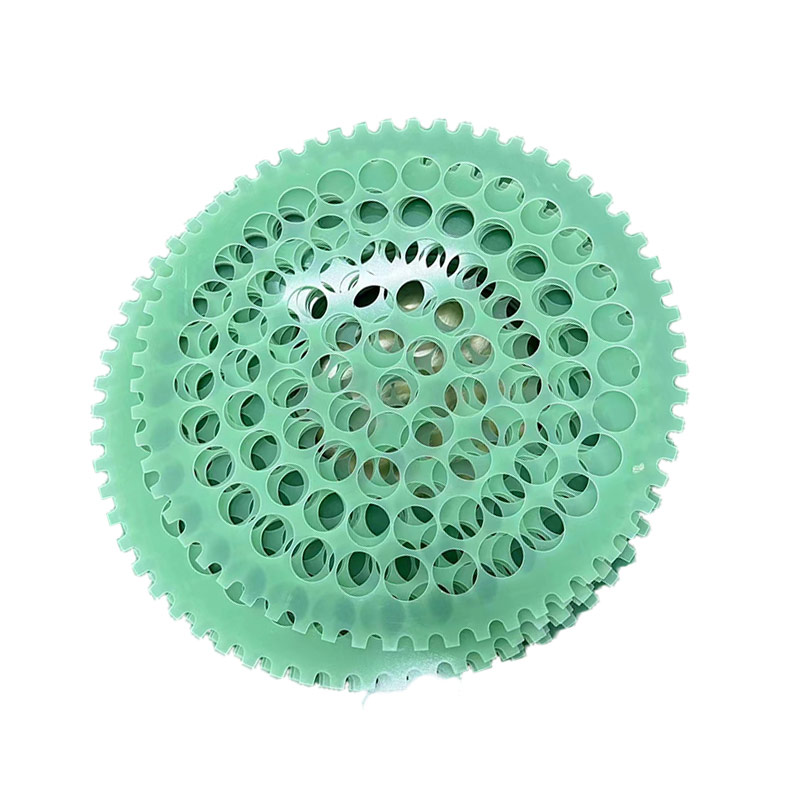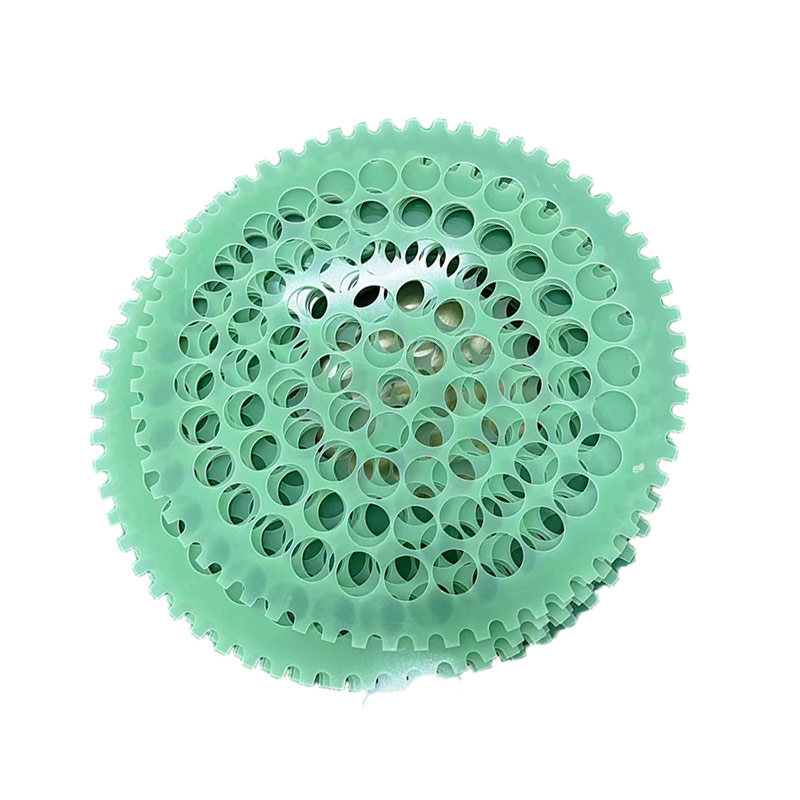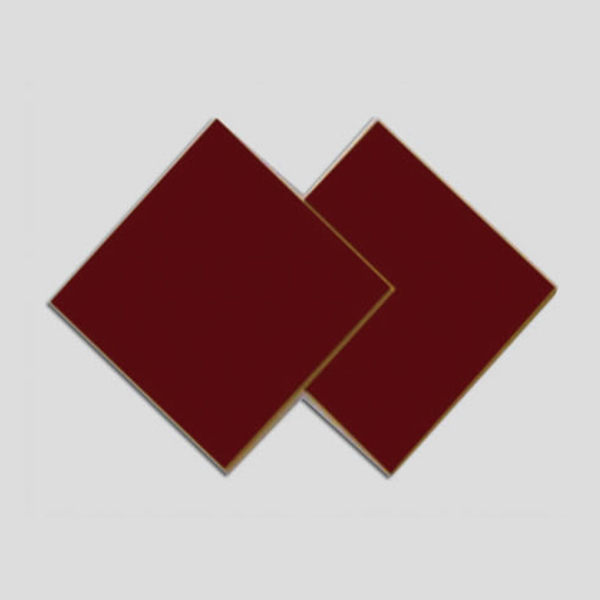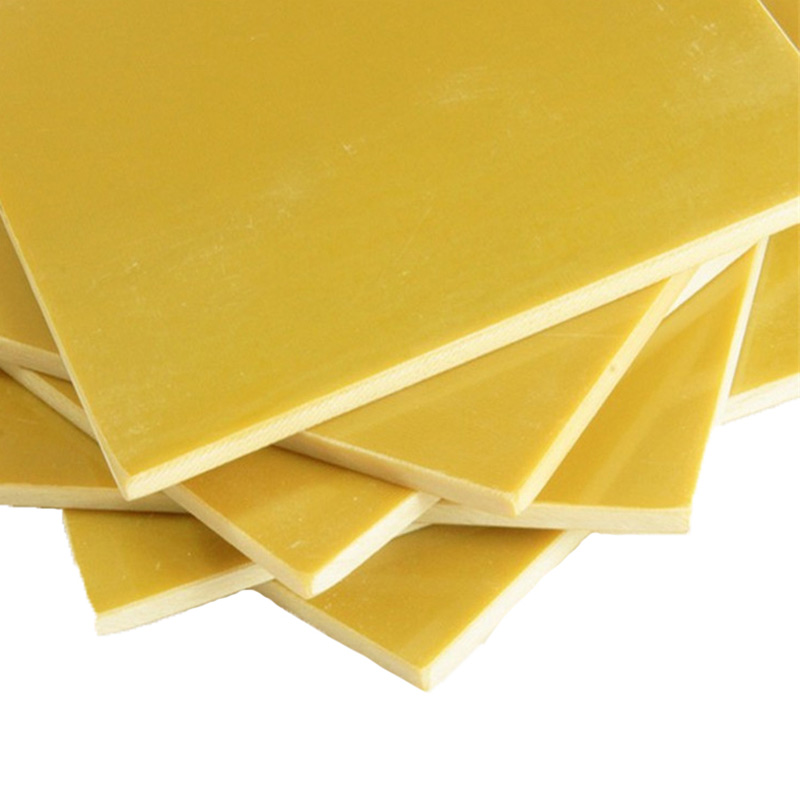Epoxy Glass Laminate
Please click the button below to contact us.
Introduction:Epoxy Glass Laminate is a laminated sheet made of epoxy resin and glass fiber reinforced materials under high temperature and high pressure. It has excellent mechanical strength, heat resistance, chemical corrosion resistance and electrical insulation properties, and is widely used in electronics, aerospace, architectural decoration and other fields.
Product Description
The Epoxy Glass Laminate is manufactured by heat pressing electric industry fiberglass cloth dipped in epoxy resin. It serves as mechanical, electric, and electronic insulation components for applications at homoeothermy and moderate temperatures, offering specific mechanical and electrical properties. This product, comprised of brominated epoxy resin impregnated glass fiber cloth, undergoes heating and pressurization to ensure high mechanical, dielectric, and flame retardant properties, along with excellent heat and moisture resistance, and machinability. Compliant with EU ROHS and SGS standards, it finds extensive use in Southeast Asia, the EU, India, and beyond.
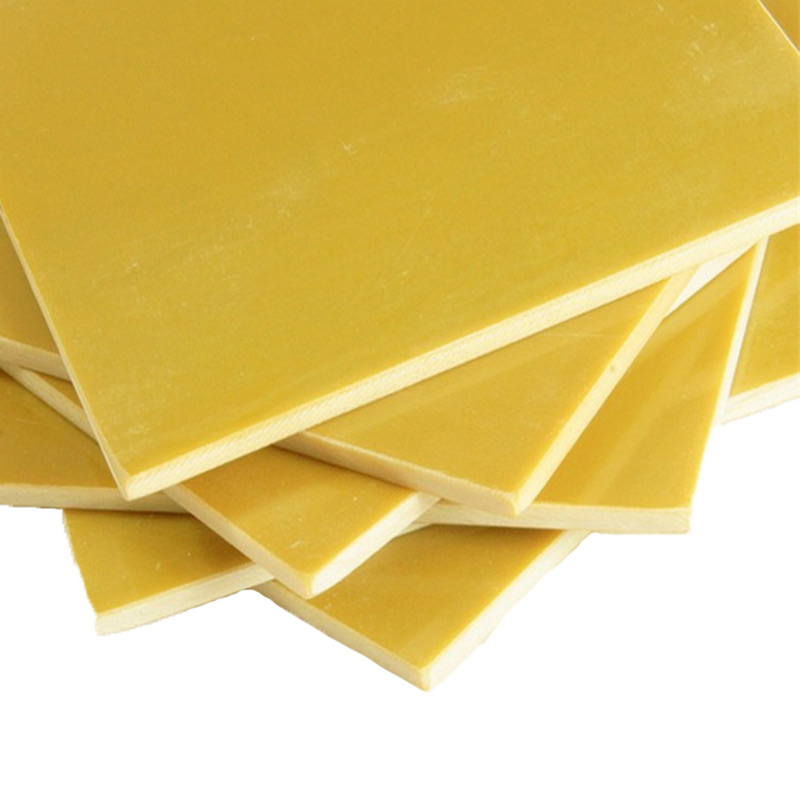
Epoxy Glass Laminate Parameters:
| Indicator name | Unit | Indicator Value | |
| Density | g/cm³ | 1.8–2.0 | |
| Water absorption | % | ≤ 0.5 | |
| Vertical layer bending strength | MPa | ≥ 340 | |
| Vertical layer compression strength | MPa | ≥ 350 | |
| Parallel layer impact strength (simple beam method notch) | K J/m² | ≥ 37 | |
| Parallel layer shear strength | MPa | ≥ 34 | |
| Tensile strength | MPa | ≥ 300 | |
| Vertical layer direction electric strength (90 ℃± 2 ℃ in oil) | 1mm | KV/mm | ≥ 14.2 |
| 2mm | ≥ 11.8 | ||
| 3mm | ≥ 10.2 | ||
| Parallel layer direction breakdown voltage (90 ℃± 2 ℃ in oil) | KV | ≥ 40 | |
| Dielectric loss factor (50 Hz) | – | ≤ 0.04 | |
| Insulation resistance | Normality | Ω | ≥ 5.0 × 1012 |
| After immersed in water for 24h | ≥ 5.0 × 1010 | ||
| Flammability (UL-94) | Level | – | |
Technical process of Epoxy Glass Laminate
The production process of Epoxy Glass Laminate involves several key steps:
1. Raw material preparation
Epoxy resin: As an adhesive, it provides excellent bonding performance and temperature resistance.
Glass fiber cloth: As a reinforcing material, it gives the material high strength and high rigidity.
Curing agent, accelerator, etc.: adjust the resin curing speed and final performance.
2. Dipping process
The glass fiber cloth passes through the resin impregnation tank to make the resin evenly penetrate the fiber.
3. Lamination molding
The hot pressing process is used to cure the resin at high temperature (150-200℃) and high pressure (2-10MPa) to form a stable composite material structure.
4. Post-processing
The cured sheet is cut, polished, drilled and other mechanical processing to meet different application requirements.
Features of Epoxy Glass Laminate
1. High mechanical strength
Glass fiber reinforcement makes it excellent in tensile and bending resistance, suitable for structural load-bearing parts.
2. Excellent heat resistance
It can be used for a long time at 150-180℃, and the short-term temperature resistance can reach more than 200℃.
3. Good electrical insulation
High-frequency circuit boards require low dielectric loss. Epoxy Glass Laminate can effectively isolate current and is suitable for high-voltage insulation components.
4. Chemical corrosion resistance
It resists acid, alkali and organic solvent erosion and is suitable for chemical equipment lining.
5. Good dimensional stability
It has a low thermal expansion coefficient and is less affected by temperature and humidity changes, and is suitable for precision instrument components.
6. Lightweight
Compared with metal materials, it is lighter but has similar strength, and is suitable for the aerospace field.
Application scenarios of Epoxy Glass Laminate
1. Electronics and circuit board industry
Printed circuit board (PCB) substrate: High-frequency PCB and multi-layer circuit boards use high TG (glass transition temperature) epoxy glass laminate to improve signal transmission stability.
Semiconductor packaging substrate: used for IC packaging substrate, providing good thermal management performance and electrical insulation.
2. Aerospace
Satellite antenna substrate: lightweight and radiation-resistant, suitable for spacecraft structural parts.
Aviation interior panels: fire-retardant and flame-retardant, in line with aviation safety standards.
3. Construction and decoration industry
Fireproof partition board: high-rise buildings use flame-retardant epoxy glass laminates to improve fire resistance.
Curtain wall decorative panels: the surface can be coated or sprayed to achieve beautiful and weather-resistant decorative effects.
4. New energy and power industry
Wind turbine blades: as a reinforced laminate material, improve the strength and weather resistance of the blades.
High-voltage insulation components: insulation layer for high-voltage equipment such as transformers and capacitors.
5. Automobile manufacturing
Battery pack protection plate: electric vehicle battery shells use flame-retardant epoxy glass laminates to improve safety.
Automotive circuit boards: high temperature resistant and vibration-resistant, suitable for automotive electronic control systems.
6. Industrial equipment
Chemical tank lining: excellent corrosion resistance, used for equipment protection in strong acid and alkali environments.
Mechanical structural parts: Replace metal parts, reduce weight and improve corrosion resistance.
7. Consumer electronics
Smartphone antenna substrate: The need for high-frequency signal transmission has led to the use of low-loss epoxy glass laminates.
LED heat dissipation substrate: Optimize thermal management and increase the life of LED lamps.
Epoxy Glass Laminate Processing Guide
1. Cutting and drilling
Use carbide tools or laser cutting to avoid delamination and burrs.
Use low-speed and high-feed methods when drilling to reduce glass fiber shedding.
2. Bonding and packaging
Use epoxy adhesives for bonding to ensure interface strength.
UV curing glue can be used to quickly fix electronic components.
3. Surface treatment
Spraying, plating or lamination can be performed to improve wear resistance and aesthetics.
4. Bending and forming
Thermoforming processes can be used to make complex curved surfaces, and temperature and pressure must be controlled to avoid cracking.
FAQ
Q1: What is the difference between Epoxy Glass Laminate and FR4?
A1: FR4 is a standard type of epoxy glass laminate, usually referring to a general material with a Tg of 130-140°C, while high-performance epoxy glass laminates may have higher Tg or special properties (such as low dielectric loss).
Q2: How to choose epoxy glass laminates suitable for high-frequency applications?
A2: High-frequency applications require models with low dielectric constant (Dk) and low dissipation factor (Df), such as Rogers' high-frequency laminates.
Q4: Can it be used in long-term outdoor exposure environments?
A4: Yes, but you need to choose UV-stable types or do surface protection treatment to prevent aging.
Q5: What is the thermal expansion coefficient of epoxy glass laminates?
A5: Usually 12-16ppm/°C, lower than ordinary plastics but higher than metals. Thermal stress matching issues need to be considered during design.

